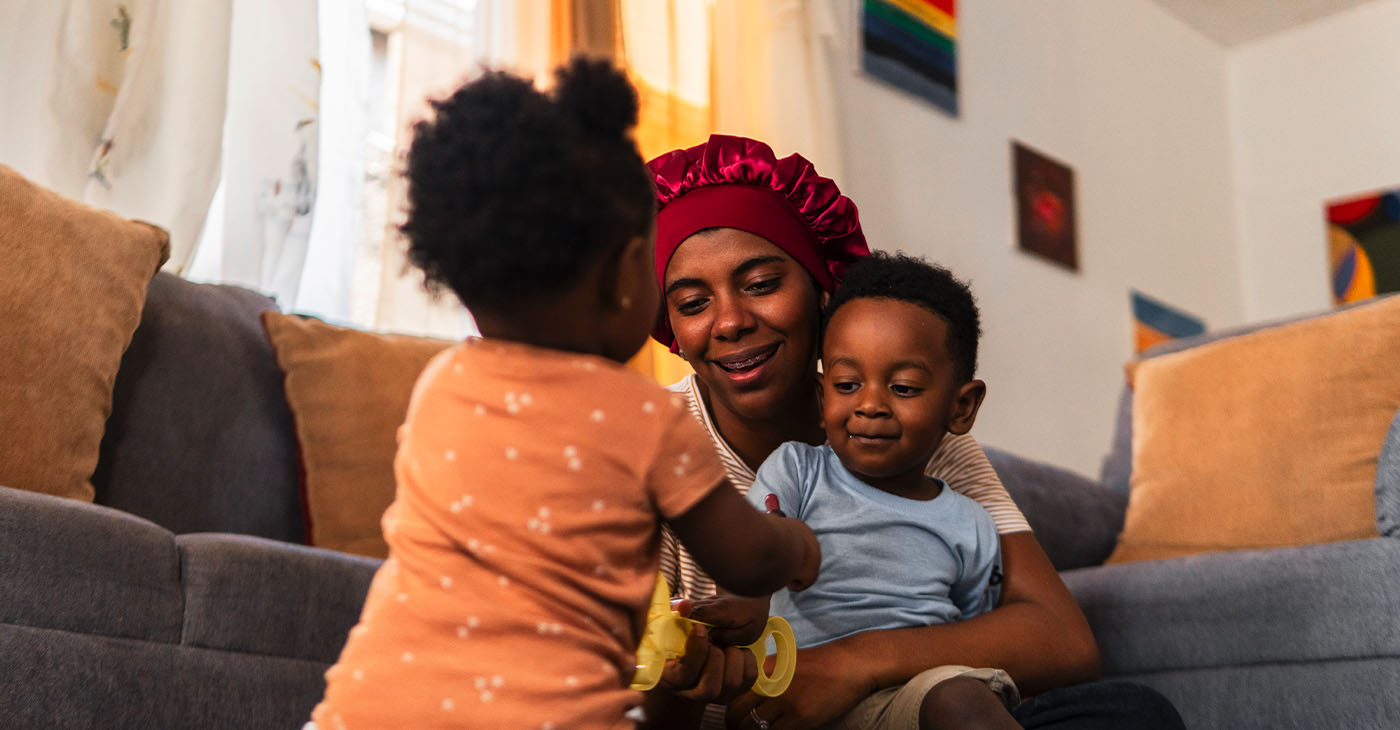#NNPA BlackPress
The Fight for Equal Pay, Gender Parity Heats Up
NNPA NEWSWIRE — Black women sit at the nexus of race and gender and are buffeted by the twin spectres of these “isms”, and struggle upstream against a current of prejudice and bias which is compounded by gender and race. This intersectional discrimination exacerbates those gender and race gaps, stymies Black women’s ability to access educational opportunities, and has a pervasive and corrosive impact on their careers and career advancement, experts say.
By Barrington M. Salmon, Contributing Writer, Black Press USA
Despite the United States touting itself as the bastion of freedom and equality, women in this country – despite comprising 50.8 percent of the population – have always found themselves in the position of having to fight for salary and wages comparable to men.
A range of studies show some progress, but stubborn racial and gender wage gaps persist in the United States. Often, researchers point to disparities in education, the fact that many African-American women and other women of color are clustered at the lower end of the pay scale and that the minimum wage hasn’t been increased since 2007 as factors contributing to the wage gap. But what’s often downplayed or ignored is the racism and sexism that’s also at play.
Black women sit at the nexus of race and gender and are buffeted by the twin spectres of these “isms”, and struggle upstream against a current of prejudice and bias which is compounded by gender and race. This intersectional discrimination exacerbates those gender and race gaps, stymies Black women’s ability to access educational opportunities, and has a pervasive and corrosive impact on their careers and career advancement, experts say.
The wage gap has real-world consequences.
Dr. Avis Jones-DeWeever said that over their lifetimes, Black women stand to lose between $800,000 and $1 million because of these disparities.
“While the gender pay gap is an issue for all women, it is an especially wicked problem for black women,” said Dr. Jones-DeWeever, a women’s empowerment expert, international speaker and diversity consultant. “Black women are already economically disadvantaged and face double discrimination within the workforce. The additional burden of a 38 percent pay gap exacerbates the black wealth gap in America. It’s such an engrained problem. The typical Black woman will lose more than $800,000 over her lifetime, and in DC, the inequality means that Black women could lose more than $1 million.”
“A black woman has to earn a B.A. to earn what a white man with a GED would earn. It’s huge and really hardwired into the system,” continued Dr. Jones-DeWeever, who, among her many portfolios, mentors and instructs black women on how to navigate the shoals of business and achieve career and financial success. “It’s devastating because with Black college-educated women making as much as 30 percent less than their white male counterparts, that’s a huge disadvantage. That means not being able to put food on the table, buy clothes for your children, not being able to have a better quality of life or diverting money to wealth-building.”
According to the National Partnership for Women and Families (NPWF), median wages for black women in the United States are $36,227 per year, compared to median wages of $57,925 annually for white, non-Hispanic men. This amounts to a difference of $21,698 each year. In that same report, NPWF also highlighted that if the wage gap were eliminated, on average, a black woman working full time, year-round would have enough money for:
- Two and a half years of child care
- Nearly 2.5 additional years of tuition and fees for a four-year public university, or the full cost of tuition and fees for a two-year community college
- 159 more weeks of food for her family (three years’ worth)
- More than 14 additional months of mortgage and utilities payments
- 22 more months of rent.
The National Women’s Law Center reports that women of every race are paid less than men, at all education levels – and it only gets worse as women’s careers progress.
“Despite the fact that women have made enormous gains in educational attainment and labor force involvement in the last several decades, unequal pay remains pervasive in 97 percent of occupations, showing that no matter what their job, women are paid less than men doing the same job in nearly every sector of work,” an NWLC fact sheet noted.
Women who work full time, year-round in the United States are paid just 80 cents for every dollar paid to their male counterparts. This gap, which amounts to a typical loss of $10,086 per year for a working woman – or $403,440 over a 40-year career – means that women have to work 15 months … to make what men did in the previous 12-month calendar year.”
Studies by gender specialists, academics and women’s activists have statistics showing that the occupations African-American women have does not explain away the Black women’s wage gap, the NWLC said.
- For example, Black women working as physicians and surgeons—a traditionally male, high wage occupation—make 54 cents for every dollar paid to white, non-Hispanic men working as physicians and surgeons.
- Black women working as customer service representatives—a mid-wage, female dominated occupation—make 75 cents for every dollar paid to white, non-Hispanic men working as customer service representatives.
- Black women working as construction laborers—a traditionally male, mid-wage occupation—make 81 cents for every dollar paid to white, non-Hispanic men working as construction laborers.
- Black women working as personal care aides—a heavily female, low wage occupation—make 87 cents for every dollar paid to white, non-Hispanic men working as personal care aides.
In addition, Black women experience a wage gap even in occupations where they are over-represented. More than two in five African-American women (44.8 percent) are employed in one of 10 occupations. In every one of those occupations, Black women are typically paid less than white, non-Hispanic men. Among the 10 most common occupations for Black women, two of those occupations – cashiers and retail salespeople and janitors, building cleaners, maids, and housekeepers – typically pay Black women a very low wage – less than $10 per hour – while they typically pay white, non-Hispanic men substantially more.
Some solutions, NWLC experts say, include strengthening America’s pay discrimination laws, pushing harder to get Congress to pass the Paycheck Fairness Act, The Pregnant Workers Fairness Act, the Family Act and the Schedules That Work Act – all which would address the discrimination women face when they’re pregnant or caregiving and support those who need paid leave, predictable work schedules, and stability for themselves and their families.
Raising the federal minimum wage is yet another way to move towards parity. So far, six states and the District of Columbia have increased the minimum wage to $15 over the next few years.
Another solution is making the Earned Income Tax Credit more widely available to needy recipients. The EITC is a tax credit designed to offset payroll taxes and supplement wages for people working in low-wage jobs, providing the most benefits to low- to moderate-income families with children. The federal EITC lifted more than 1.2 million women 18 and older and nearly 3.5 million children out of poverty in 2017, and 28 states and the District of Columbia currently offer their own EITCs to provide an additional boost.
Dalana A. Brand, vice president of Global Total Rewards at Electronic Arts, Inc., contends that Black women can’t afford to wait, arguing in an opinion piece last year for Blavity, an Internet media company, that in the midst of the flurry of publicity, tweets, posts, hashtags and calls for change, one important element is missing.
“What often gets left out of that discussion is that the hallmark day in April does not apply to black women and other women of color,” she said. “… So, while white women caught up on April 10, black women must wait for over half the year to pass before our wages catch up to what men made a year ago.”
Brand, a highly-sought after salary strategist and career transformation coach, said black women are paid 38 percent less than white men and 21 percent less than white women but “the sad fact is that most people are either unaware or don’t care about the appalling disparity black women face with respect pay equity.”
She added that a study by LeanIn.Org, which partnered with Survey Monkey and the National Urban League, indicates that a third of Americans aren’t aware of the pay gap between black women and white men, and half of them don’t know about a similar gap between black and white women.
Much like the feminist movement, black women are being largely ignored by the equal pay movement,” she added.
Dr. Jones-DeWeever and Brand said that as career strategists and salary consultants, there are a number of things that Black women can and need to do to fight back against wage disparities. The first action is for Black women to embrace their power and value and translate that into dollars and benefits during salary negotiations.
“We don’t understand the basics of negotiating,” Dr. Jones-DeWeever said. “We have to understand our value and how to negotiate. When you’re first hired, that’s when you’re most powerful. I never accept the first offer. The first offer is only the beginning of negotiations. You’d be surprised how much money you can get. You have to negotiate for money, a package and vacation.
Black communities must also take other tacks to confront and topple this problem, they said.
“The reality of racism means that Black women will be offered less,” said Dr. Jones-DeWeever. “In terms of fixing it, we have to have conversations about financial literacy and we also have a responsibility to educate our children about their power, worth and value and empowering them.”
Brand concurred.
To date, she said, much of the equal pay movement has been focused on awareness building campaigns and encouraging women to effectively negotiate their salaries.
“While these are important steps, this is only scratching the surface,” Brand explained. “Getting to pay parity must also involve addressing the corporate systems and state and federal laws that need to change. As black women we must unify and use our collective voices to push pay equality and the racial wealth gap to the top our agenda. Black women have always been at the forefront of the push for equality in our country, whether it was civil rights or social justice, we have been critical forces for change. The equal pay movement should be no different.”
Brand and Dr. Jones-DeWeever are called in frequently to consult with Fortune 500 and other companies. They said Black women should also be actively engaged in tackling the equal pay issue within corporate America by participating in employee resource groups at work and collectively guaranteeing that the companies they work for are held accountable for addressing these issues.
African American churches, sororities and fraternities and civil society and community organizations need to actively engage in the political process and pressure elected officials to advance additional laws designed to protect against gender discrimination and pay inequality, they said, and concerned people also need to organize efforts and/or sign petitions to demand to push the government to act.
#NNPA BlackPress
LIHEAP Funds Released After Weeks of Delay as States and the District Rush to Protect Households from the Cold
BLACKPRESSUSA NEWSWIRE — The federal government has released $3.6 billion in home heating assistance after a delay that left states preparing for the start of winter without the program’s annual funding.

By Stacy M. Brown
Black Press USA Senior National Correspondent
The federal government has released $3.6 billion in home heating assistance after a delay that left states preparing for the start of winter without the program’s annual funding. The Low-Income Home Energy Assistance Program, known as LIHEAP, helps eligible households pay heating and cooling bills. The release follows a shutdown that stretched 43 days and pushed agencies across the country to warn families of possible disruptions.
State officials in Minnesota, Kansas, New York, and Pennsylvania had already issued alerts that the delay could slow the processing of applications or force families to wait until December for help. In Pennsylvania, more than 300,000 households depend on the program each year. Minnesota officials noted that older adults, young children, and people with disabilities face the highest risk as temperatures fall.
The delay also raised concerns among advocates who track household debt tied to rising utility costs. National Energy Assistance Directors Association Executive Director Mark Wolfe said the funds were “essential and long overdue” and added that high arrearages and increased energy prices have strained families seeking help.
Some states faced additional pressure when other services were affected by the shutdown. According to data reviewed by national energy advocates, roughly 68 percent of LIHEAP households also receive nutrition assistance, and the freeze in multiple programs increased the financial burden on low-income residents. Wolfe said families were placed in “an even more precarious situation than usual” as the shutdown stretched into November.
In Maryland, lawmakers urged the Trump administration to release funds after the state recorded its first cold-related death of the season. The Maryland Department of Health reported that a man in his 30s was found outdoors in Frederick County when temperatures dropped. Last winter, the state documented 75 cold-related deaths, the highest number in five years. Rep Kweisi Mfume joined more than 100 House members calling for immediate federal action and said LIHEAP “is not a luxury” for the 100,000 Maryland households that rely on it. He added that seniors and veterans would be placed at risk if the program remained stalled.
Maryland Gov. Wes Moore used $10.1 million in state funds to keep benefits moving, but noted that states cannot routinely replace federal dollars. His administration said families that rely on medical equipment requiring electricity are particularly vulnerable.
The District of Columbia has already mapped out its FY26 LIHEAP structure in documents filed with the federal government. The District’s plan shows that heating assistance, cooling assistance, weatherization, and year-round crisis assistance operate from October 1 through September 30. The District allocates 50 percent of its LIHEAP funds to heating assistance, 10 percent to cooling, 13 percent to year-round crisis assistance, 15 percent to weatherization, and 10 percent to administrative costs. Two percent is used for services that help residents reduce energy needs, including education on reading utility bills and identifying energy waste.
The District’s plan lists a minimum LIHEAP benefit of $200 and a maximum of $1,800 for both heating and cooling assistance. Crisis benefits are provided separately and may reach up to $500 when needed to resolve an emergency. The plan states that a household is considered in crisis if it has been disconnected from energy service, if heating oil is at 5 percent or less of capacity, or if the household has at least $200 owed after the regular benefit is applied.
The District’s filing notes that LIHEAP staff conduct outreach through community meetings, senior housing sites, Advisory Neighborhood Commissions, social media, posters, and mass mailings. The plan confirms that LIHEAP applicants can apply in person, by mail, by email, or through a mobile-friendly online application and that physically disabled residents may request in-home visits.
As agencies nationwide begin distributing the newly released funds, states continue working through large volumes of applications. Wolfe said LIHEAP administrators “have been notified that the award letters have gone out and the states can begin to draw down the funds.”
#NNPA BlackPress
Seven Steps to Help Your Child Build Meaningful Connections
BLACKPRESSUSA NEWSWIRE — Swinging side by side with a friend on the playground. Sharing chalk over bright, colorful sidewalk drawings. Hiding behind a tree during a spirited game of hide-and-seek. These simple moments between children may seem small, but they matter more than we think

By Niyoka McCoy, Ed.D., Chief Learning Officer, Stride/K12
Swinging side by side with a friend on the playground. Sharing chalk over bright, colorful sidewalk drawings. Hiding behind a tree during a spirited game of hide-and-seek. These simple moments between children may seem small, but they matter more than we think: They lay the foundation for some of life’s most important skills.
Through everyday play, young children begin learning essential social and emotional skills like sharing, resolving conflicts, showing empathy, and managing their emotions. These social skills help shape emotional growth and set kids up for long-term success. Socialization in early childhood isn’t just a “nice-to-have”—it’s essential for development.
Yet today, many young children who haven’t yet started school aren’t getting enough consistent, meaningful interaction with peers. Research shows that there’s a decline in active free play and peer socialization when compared to previous generations.
There are many reasons for this. Children who are home with a parent during the day may spend most of their time with adults, limiting opportunities for peer play. Those in daycare or preschool may have restricted free play, and large classrooms can reduce supervision and social coaching. Some children live in rural areas, are homebound due to illness, have full schedules, or rely on screens to fill their playtime. And for some families, finding other families with young children to connect with isn’t easy.
While these challenges can feel significant, opportunities for connection still exist in every community. Families can take simple steps to help children build friendships, create a sense of belonging, and strengthen social skills. Here are some ideas to get started:
- Storytime sessions at libraries or local bookstores
- Community offerings such as parent-child workshops, art, music, gymnastics, swimming, or sports programs
- Weekly events at children’s museums, which may include art projects, music workshops, or science experiments
- Outdoor exploration, where kids can play with peers
- Local parenting groups that organize playdates and group activities
- Volunteer opportunities where children can participate, such as pet adoption events or packing meals at a food bank
- Classes for kids at local businesses, including hardware, grocery, or craft stores
Some of these community activities are free or low-cost and give kids the chance to build friendships and practice social skills. Parents can also model positive social behavior by interacting with other parents and encouraging their children to play with their peers.
These may seem like small moments of connection, but they can have a powerful impact. Every time your child shares a toy, plays make-believe with peers, or races a friend down the slide, they’re not just playing—they’re learning the skills that build confidence, empathy, and lasting friendships. And it’s good for you, too. Creating intentional opportunities for play also helps you strengthen your own network of parents who can support one another as your children grow together.
#NNPA BlackPress
Seven Steps to Help Your Child Build Meaningful Connections
BLACKPRESSUSA NEWSWIRE — Swinging side by side with a friend on the playground. Sharing chalk over bright, colorful sidewalk drawings. Hiding behind a tree during a spirited game of hide-and-seek. These simple moments between children may seem small, but they matter more than we think

By Niyoka McCoy, Ed.D., Chief Learning Officer, Stride/K12
Swinging side by side with a friend on the playground. Sharing chalk over bright, colorful sidewalk drawings. Hiding behind a tree during a spirited game of hide-and-seek. These simple moments between children may seem small, but they matter more than we think: They lay the foundation for some of life’s most important skills.
Through everyday play, young children begin learning essential social and emotional skills like sharing, resolving conflicts, showing empathy, and managing their emotions. These social skills help shape emotional growth and set kids up for long-term success. Socialization in early childhood isn’t just a “nice-to-have”—it’s essential for development.
Yet today, many young children who haven’t yet started school aren’t getting enough consistent, meaningful interaction with peers. Research shows that there’s a decline in active free play and peer socialization when compared to previous generations.
There are many reasons for this. Children who are home with a parent during the day may spend most of their time with adults, limiting opportunities for peer play. Those in daycare or preschool may have restricted free play, and large classrooms can reduce supervision and social coaching. Some children live in rural areas, are homebound due to illness, have full schedules, or rely on screens to fill their playtime. And for some families, finding other families with young children to connect with isn’t easy.
While these challenges can feel significant, opportunities for connection still exist in every community. Families can take simple steps to help children build friendships, create a sense of belonging, and strengthen social skills. Here are some ideas to get started:
- Storytime sessions at libraries or local bookstores
- Community offerings such as parent-child workshops, art, music, gymnastics, swimming, or sports programs
- Weekly events at children’s museums, which may include art projects, music workshops, or science experiments
- Outdoor exploration, where kids can play with peers
- Local parenting groups that organize playdates and group activities
- Volunteer opportunities where children can participate, such as pet adoption events or packing meals at a food bank
- Classes for kids at local businesses, including hardware, grocery, or craft stores
Some of these community activities are free or low-cost and give kids the chance to build friendships and practice social skills. Parents can also model positive social behavior by interacting with other parents and encouraging their children to play with their peers.
These may seem like small moments of connection, but they can have a powerful impact. Every time your child shares a toy, plays make-believe with peers, or races a friend down the slide, they’re not just playing—they’re learning the skills that build confidence, empathy, and lasting friendships. And it’s good for you, too. Creating intentional opportunities for play also helps you strengthen your own network of parents who can support one another as your children grow together.
-

 Activism3 weeks ago
Activism3 weeks agoOakland Post: Week of November 12 – 18, 2025
-

 Activism4 weeks ago
Activism4 weeks agoOakland Post: Week of November 5 – 11, 2025
-

 Activism2 weeks ago
Activism2 weeks agoIN MEMORIAM: William ‘Bill’ Patterson, 94
-

 Activism3 weeks ago
Activism3 weeks agoHow Charles R. Drew University Navigated More Than $20 Million in Fed Cuts – Still Prioritizing Students and Community Health
-

 Bay Area3 weeks ago
Bay Area3 weeks agoNo Justice in the Justice System
-

 #NNPA BlackPress3 weeks ago
#NNPA BlackPress3 weeks agoThe Perfumed Hand of Hypocrisy: Trump Hosted Former Terror Suspect While America Condemns a Muslim Mayor
-

 #NNPA BlackPress2 weeks ago
#NNPA BlackPress2 weeks agoTrump’s Death Threat Rhetoric Sends Nation into Crisis
-

 #NNPA BlackPress3 weeks ago
#NNPA BlackPress3 weeks agoProtecting Pedophiles: The GOP’s Warped Crusade Against Its Own Lies
























































